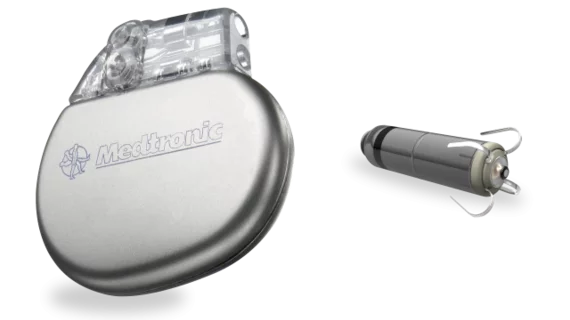Leadless pacemakers appear to be safe, effective in children with bradycardia
Leadless pacemakers may be a safe and effective short-term treatment option for pediatric patients presenting with bradycardia, according to new research published in Circulation: Arrhythmia and Electrophysiology.[1] Additional research is still required to determine the long-term effectiveness of these devices.
Researchers tracked data from 63 bradycardia patients between the ages of 4 and 21 years old treated with a leadless pacemaker from 2016 to 2021. The average patient age was 15 years old, and patients were treated at one of 15 centers in the United States, United Kingdom or Italy. Thirty-two percent of patients presented with congenital heart disease.
All patients were treated with a Micra transcatheter leadless pacemaker from Medtronic. Data came from a registry managed by the Pediatric and Congenital Electrophysiology Society.
Overall, implantation was successful in all but one patient. While 16% of patients experienced a complication, a majority of those issues were minor bleeding events that could be treated quickly. There were three more serious complications, including a blood clot in the femoral vein in one patient, cardiac perforation in one patient and suboptimal pacemaker functionality, which required it to be removed after one month, in one patient. There were no deaths, pacemaker-related infections or device embolizations.
After an average follow-up period of 9.5 months, the research team noted that all successfully implanted pacemakers still had a strong battery life.
“The leadless pacemaker works very well in children, just like it does in adults,” lead author Maully J. Shah, MBBS, director of cardiac electrophysiology in the Cardiac Center at Children’s Hospital of Philadelphia and a professor of pediatrics at the Perelman School of Medicine at the University of Pennsylvania, said in a prepared statement. “We found it may be safely implanted in select pediatric patients that need pacing. Our study’s results indicate select children may be considered candidates since they may benefit greatly from leadless pacing. However, because of the current technology, which uses a very large catheter designed for adults to place the leadless pacemaker and lack of reliable future extractability of the pacemaker, the wider pediatric population is not able to benefit from this device.”
The group noted that smaller catheters are needed to get the best possible clinical outcomes when treating these younger patients. However, better catheters are just one piece of the puzzle.
“Leadless pacemaker technology is the wave of the future,” Shah added. “This is an excellent technology that may be offered to a wider pediatric population. However, techniques and tools to place the device must be designed for smaller patients, specifically children, and there needs to be a mechanism to remove and replace this pacemaker without surgery when the battery runs out since pediatric patients will likely require pacing for the rest of their lives, which is several decades after implantation.”
This study does have certain limitations, including its small sample size and relatively short-term follow-up period. Shah et al. plan to keep tracking these patients for five years.
Shah does work as a consultant for Medtronic, the company behind the technology being examined, but Medtronic did not fund this analysis.
Read the full study here.

